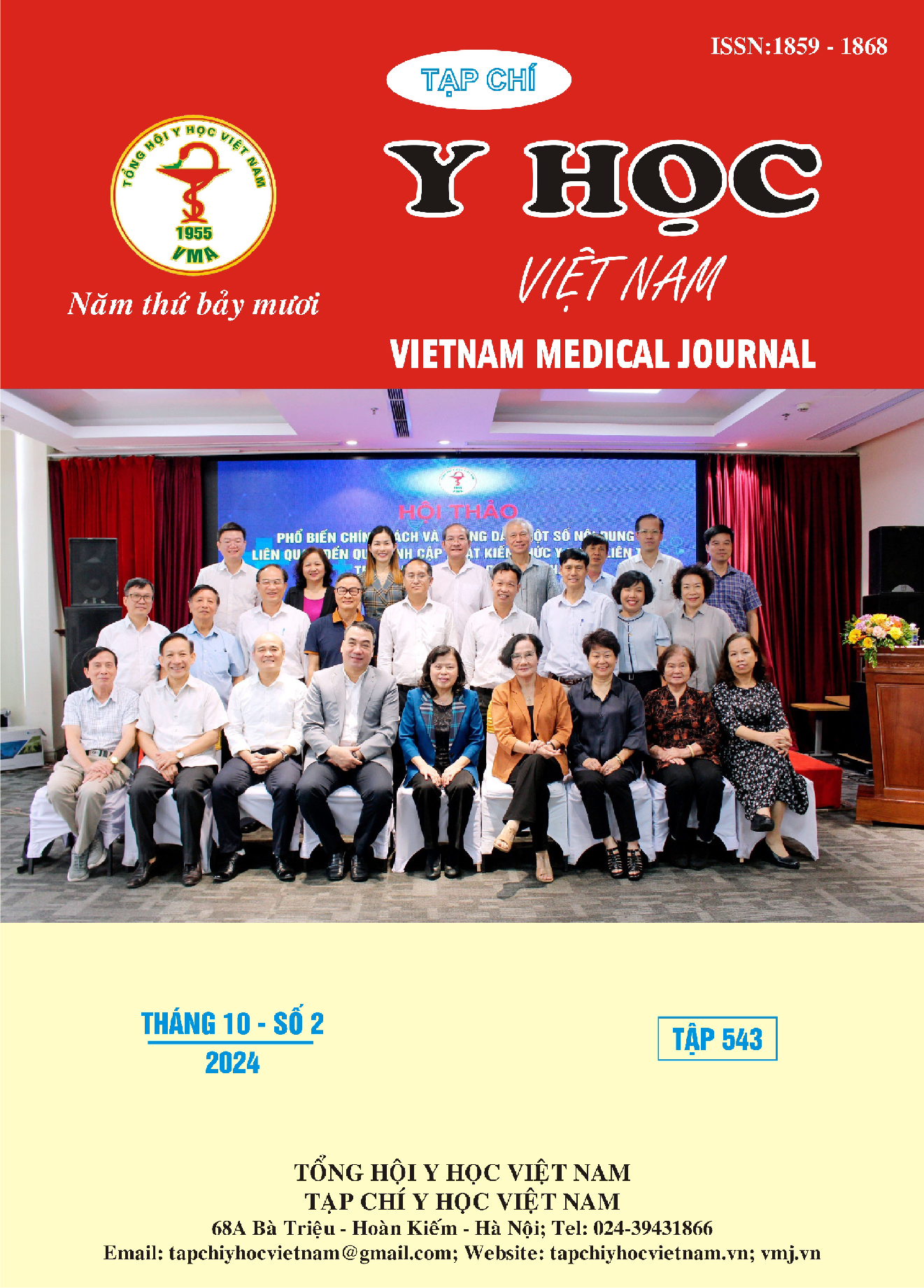EFFECTIVENESS OF NURSING INTERVENTION ON XEROSTOMIA AFTER GASTROINTESTINAL SURGERY WITH COLD NORMAL SALINE AT DONG NAI GENERAL HOSPITAL
Main Article Content
Abstract
Introduction: Xerostomia are the most common unpleasant symptoms in post-operative patients under general anesthesia. Compared to other symptoms such as bleeding, pain, etc., xerostomia received little attention from medical staff. In the present patient-centered care models, postoperative xerostomia required immediate care. We conducted a study to evaluate the effectiveness of nursing intervention to reduce xerostomia in patients after gastrointestinal surgery using cold saline at Dong Nai General Hospital. Methods: From April 2023 to August 2023, 60 patients were included and randomly divided into 2 groups, each group of 30 patients. We compared the effectiveness of cold saline to the control group using normal water in the reduction of postoperative xerostomia. Results: Xerostomia improved in both groups as the number of interventions increased. Cold saline effectively reduced thirst comparing with regular water (t = 13.25, p < 0.001). Oral cavity condition improved after intervention but did not differ between the two groups. Conclusion: Cold saline is significantly effective in reducing postoperative xerostomia in patients undergoing gastrointestinal surgery.
Article Details
Keywords
: Xerostomia; normal saline
References
2. Cho EA, Kim KH, Park JY. Effects of frozen gauze with normal saline and ice on thirst and oral condition of laparoscopic cholecystectomy patients: pilot study. J Korean Acad Nurs. Oct 2010; 40(5): 714-23. doi:10.4040/jkan.2010 .40.5.714
3. Moon Y, Lee Y, Jeong I. A Comparison of Effect between Wet Gauze with Cold Normal Saline and Wet Gauze with Cold Water on Postoperative Thirst, Oral Cavity Condition, and Saliva pH*. Journal of Korean Academy of Fundamentals of Nursing. 11/30 2015;22: 398-405. doi:10.7739/ jkafn.2015.22.4.398
4. Marin C, Diaz-de-Valdes L, Conejeros C, Martinez R, Niklander S. Interventions for the treatment of xerostomia: A randomized controlled clinical trial. J Clin Exp Dent. Feb 2021;13(2): e104-e111. doi:10.4317/jced.57924
5. Alhajj M, Babos M. Physiology, Salivation. StatPearls. 2024.
6. Huppe M, Kemter A, Schmidtke C, Klotz KF. Postoperative complaints: gender differences in expectations, prevalence and appraisal. Anaesthesist. Jul 2013;62(7):528-36. Postoperative Beschwerden: Geschlechtsunter-schiede in Erwartung, Auftreten und Bewertung. doi:10.1007/s00101-013-2182-x
7. Wang X, Liu C, Zhou Y, Huang L. The Effect of Nursing Intervention of Postoperative Thirst in Patients after Laparoscopic Cholecystectomy. American Journal of Nursing Science. 2018;7(3): 106-108. doi:10.11648/j.ajns.20180703.14
8. Ozden D, Turk G, Duger C, Kocaçal E, Tok F, Gülsoy Z. Effects of oral care solutions on mucous membrane integrity and bacterial colonization. Nursing in critical care. 12/17 2013;19doi:10.1111/nicc.12057


